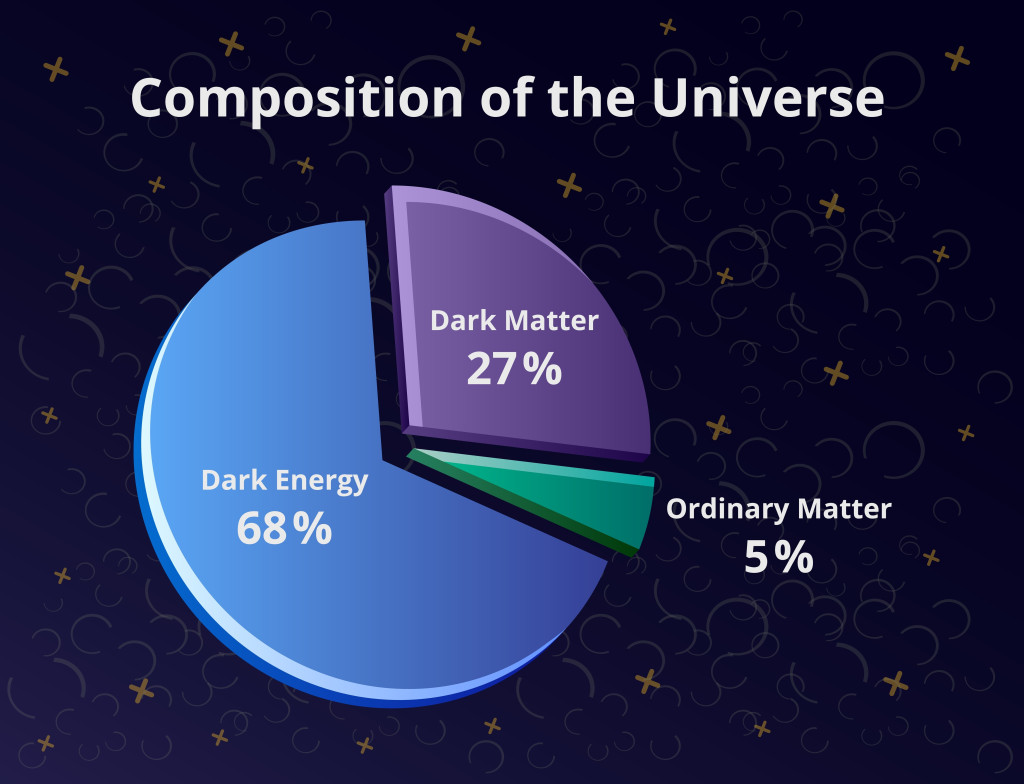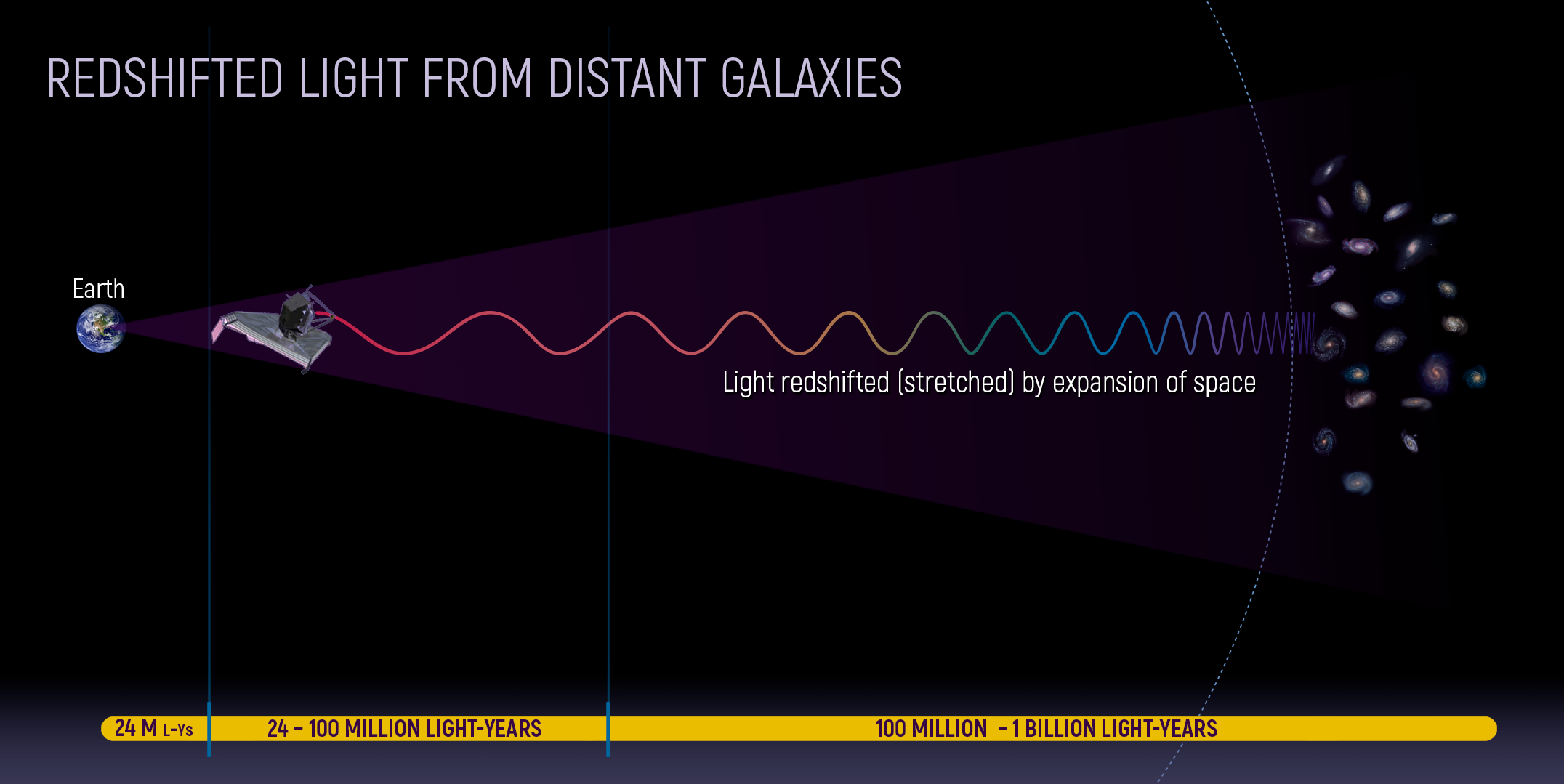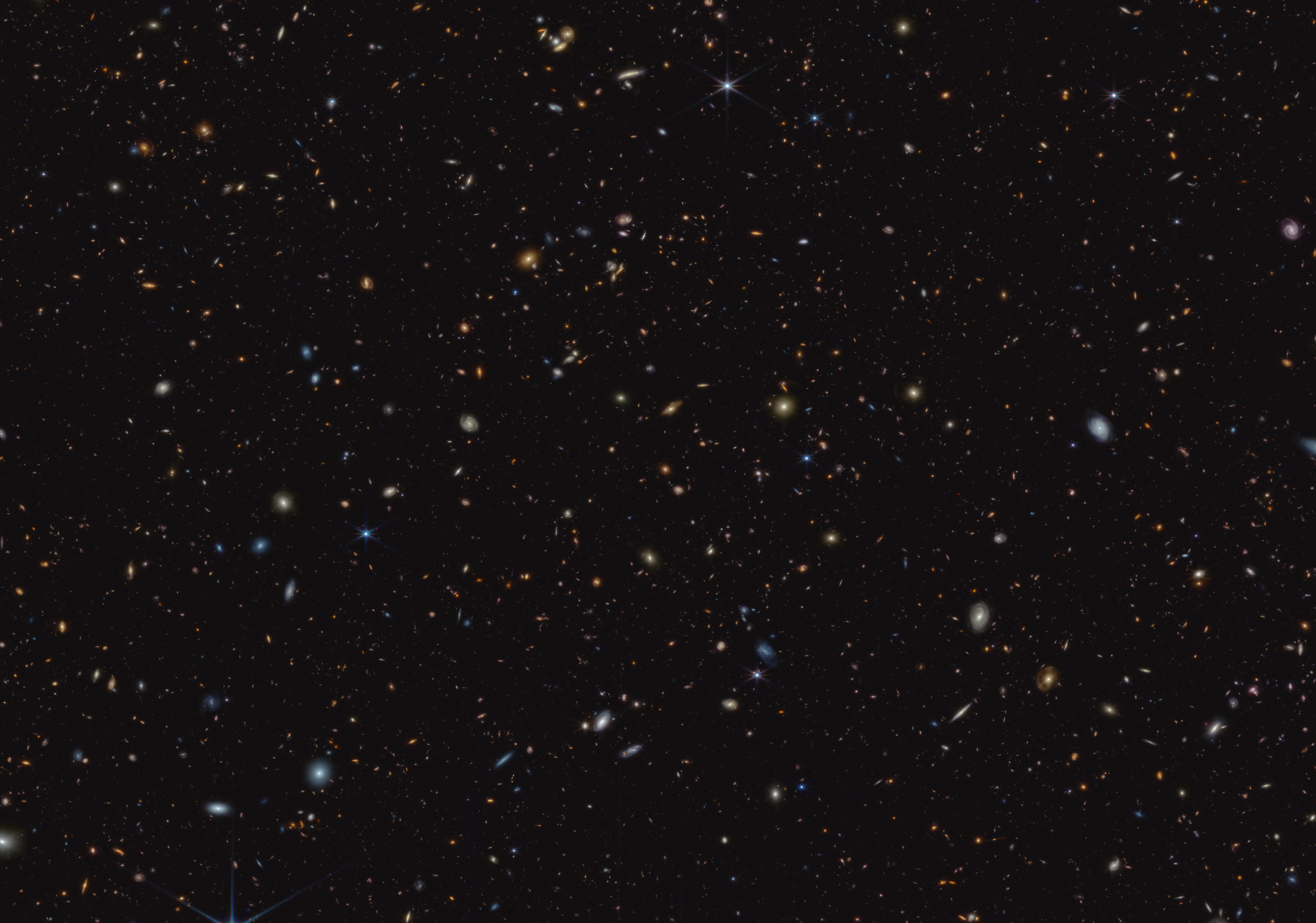Hunting Faint Galaxies with JWST as a Test for the Dark Matter Model
The faint galaxies that JWST may detect are those from fast-moving parts of the Universe.
Jan 8th, 2024; C. Williams and S. Naoz.
 Read the press release
Read the press release
Cold Dark Matter is a type of hypothetical matter that only interacts gravitationally and does not interact with light; thus, it is “dark.” It is one of the key ingredients in today’s galaxy formation theory. Astronomers have found that “regular matter”––the stars and planets in our Universe, as well as us––constitutes roughly only 1/6 of the matter in our Universe. We now understand that all galaxies are surrounded by a vast “halo” of dark matter and furthermore, that this dark matter was an essential component of their formation. The “standard cosmological model” describes how dense clumps of dark matter in the very early Universe drew in ordinary matter through gravity, causing the formation of stars and creating the galaxies we see today.
Right: a pie chart showing the composition of the Universe according to the "standard cosmological model" (image: @petrroudny43/Shutterstock)
Observations of the Milky Way’s faintest neighboring galaxies (called dwarf galaxies) suggest a possible tension between predictions from the standard cosmological model that relies on cold dark matter.

These observations of nearby faint galaxies find that they spin too fast or have a shallow density compared to predictions from dark matter theories. Are they the lightning rod of new physics, or do these observations suggest we may have forgotten something in the standard theory
Left: Graphic showing the Milky Way Galaxy (bottom right) and the Andromeda Galaxy (top left) as well as the many small neighboring "dwarf galaxies" that reside nearby. (image: Kristin McQuinn)
The James Webb Space Telescope (JWST) has opened a new window on the first galaxies in the Universe, allowing for new insights regarding their properties and formation. These galaxies at “Cosmic Dawn” host the yet undetected first generation of stars and represent a glimpse at what our nearby neighbors would have looked like at the beginning of the Universe. Comparison between these ancient galaxies and our cosmological models can help us understand how small galaxies form and evolve and tell us whether our theories are correct.
Below: Graphic illustrating how JWST will observe some of the first galaxies that existed after the Big Bang by observing their redshifted light. (image: NASA/JWST)

About a decade ago, Tseliakhovich & Hirata (2010) showed that there was a missing ingredient in the physical understanding of the evolution of our Universe. They showed that over 13 billion years ago, prior to the formation of the first galaxies, the normal matter (consisting of hydrogen and helium gas from the Big Bang) and the dark matter were moving relative to one another. . In fact, this velocity was so fast it was supersonic, meaning higher than the speed of sound of the gas. Thus, the gas was streaming past the dense clumps of dark matter that should have pulled it in to form galaxies. This supersonic “streaming” process occurred unevenly throughout the universe, affecting more than 40% of the Universe in its early days. On Earth, many supersonic phenomena are known to physicists, such as the “sonic boom” created by a plane breaking the sound barrier. In the early Universe, the supersonic streaming would have had many effects on small galaxies, moving the fuel for star formation away from their dark matter-rich centers. Exotic types of galaxies–such as star clusters with no dark matter at all or systems almost entirely consisting of dark matter–can be created by this process. Studies suggest that this streaming effect could even explain some of the tensions in the local dwarf galaxies.
A new study by the supersonic team led by UCLA graduate student Claire Williams demonstrates that while the streaming suppressed star formation at the smallest galaxies, it also boosted star formation at the dwarf galaxies' scales, causing them to outshine the non-streaming patches of the universe.
If the streaming is not taken into account, gas is attracted to the gravitational pull of dark matter, forms clumps, and knots so dense that hydrogen fusion can occur, and thus forms stars like our sun. This process continues to occur for millions and even billions of years in a galaxy, generating new stars slowly over time, and the starlight from the resulting stars makes the galaxy shine. However, the group at UCLA found that when the streaming effect is present, the gas lands far away from the dark matter and is prevented from forming stars right away. Instead, it falls back into the galaxy millions of years later. However, when the accumulated gas finally makes it back into a galaxy, a massive burst of star formation occurs all at once. These galaxies have many more young, hot, luminous stars than ordinary dwarf galaxies for a time and thus shine much brighter.

Right: Science image taken with JWST showing a field of galaxies in the JWST Advanced Deep Extragalactic Survey (JADES). There are more than 45,000 galaxies in this one image. This data allowed the team to identify hundreds of galaxies from a time when the universe was less than 600 million years old. (image: NASA/JWST/JADES)
The authors suggest that JWST has the opportunity to discover these tiny, bright galaxies at the beginning of time. The fact that they should be so bright might make it easier for the telescope to discover these small galaxies, which are typically extremely hard to detect only 375 million years after the Big Bang. Searching for bright patches of galaxies in the early Universe could even represent a test of dark matter models. Their discovery would confirm that we are on the right track with the cold dark matter model. However, if dark matter does not behave like the standard cold dark matter and the streaming effect isn’t present, then these bright dwarf galaxies won’t be found. That would be a clue for physicists and astronomers to reconsider their understanding of dark matter. Furthermore, an understanding of how these early galaxies formed with the new enhanced understanding of the supersonic streaming will shed light on the mysteries of our nearby neighbor galaxies–are they really in tension with cosmology, or are they expected based on their supersonic formation?
To read the published Letter in the Astrophysical Journal, click here.
To read more about dwarf galaxies and the stream velocity, click here.
To read about the Supersonic Project Collaboration, click here.